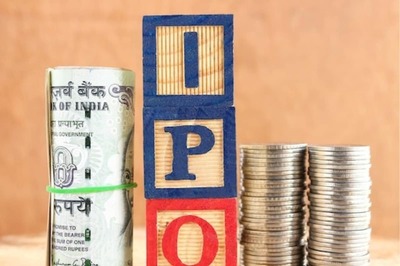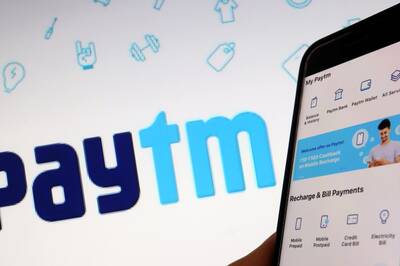
views
WASHINGTON: U.S. congressional negotiators were haggling on Wednesday over details of a $900 billion COVID-19 aid bill that is expected to include $600-$700 stimulus checks and extended unemployment benefits, as a Friday deadline loomed, lawmakers and aides said.
Top members of the Democratic-controlled House of Representatives and Republican-led Senate sounded more positive than they have in months on a fresh response to a crisis that has killed more than 304,000 Americans and thrown millions out of work.
“We made major headway toward hammering out a targeted pandemic relief package,” Senate Majority Leader Mitch McConnell said. “We need vaccine distribution money, we need to re-up the Paycheck Protection Program to save jobs, we need to continue to provide for laid-off Americans.”
PPP is the federal loan and grant aid program to small businesses suffering from the pandemic.
But congressional aides were struggling on Wednesday to draft legislative language as rates of COVID-19 infections soar to new highs, even as the United States starts to vaccinate people. The American economy is showing signs of weakening.
The measure, to be attached to a massive spending bill that must pass by Friday to avert a government shutdown, was not expected to include a dedicated funding stream for state and local governments, which has been a key Democratic priority, but opposed by Republicans, or new protections for companies from lawsuits related to the pandemic, something high on the Republican agenda.
The lack of new funds for state and local governments grappling with the pandemic “really hurts. That’s something … I would like to see included and I don’t think will be,” said the Senate’s No. 2 Democrat, Dick Durbin.
But the details of several issues were unresolved. One argument was over whether to increase reimbursements from the Federal Emergency Management Agency to local governments for expenses related to COVID-19, like personal protective equipment for schools. Democrats said that would cost about $1 billion, but Republicans were wary.
“If it’s simply a way of disguising money for state and local governments, we’ll have a lot of opposition,” said the Senate’s No. 2 Republican, John Thune.
Durbin said the goal was to reach an agreement on Wednesday and have it ready for voting beginning on Thursday. But as the day stretched into evening, that seemed less likely.
The House Democratic leader, Steny Hoyer, said that if the Friday midnight deadline for approving the spending measure is not met, he could envision another stopgap spending bill of three or four days’ duration to keep government agencies open while negotiations continue.
BOOSTING THE ECONOMY
Thune said the proposed direct payments to individuals would be around $600 to $700 per person. Some lawmakers such as Senator Bernie Sanders, an independent who caucuses with Democrats, were pushing for more.
Lawmakers were discussing $300 a week in federal unemployment benefits, and about $330 billion to help small businesses, Thune said.
The $900 billion price tag for the package would be paid for by $600 billion in repurposed funds from other parts of the budget, and $300 billion in new money, according to a senator privy to the discussions.
The negotiations come at a key moment for a U.S. economy clearly weakening after an initial rebound from a recession triggered by the pandemic earlier this year. Consumer spending, buoyed through the summer and early fall by more than $3 trillion in federal assistance, has hit a wall as new lockdowns limit business activity and keep people home.
Democratic President-elect Joe Biden said the stimulus package was encouraging but more aid would be needed.
“It looks like they’re very, very close, and it looks like there is going to be direct cash payments, but it’s a down payment – an important down payment – on what’s going to have to be done beginning at the end of January, into February,” he told reporters.
Commerce Department data showed retail sales fell unexpectedly sharply in November, with consumer outlays on goods and services showing softness across the board.
The Federal Reserve promised on Wednesday to keep funneling cash into financial markets further into the future to bolster the economy, even as policymakers’ outlook for next year improved following the rollout of a coronavirus vaccine.
Disclaimer: This post has been auto-published from an agency feed without any modifications to the text and has not been reviewed by an editor
Read all the Latest News, Breaking News and Coronavirus News here




















Comments
0 comment